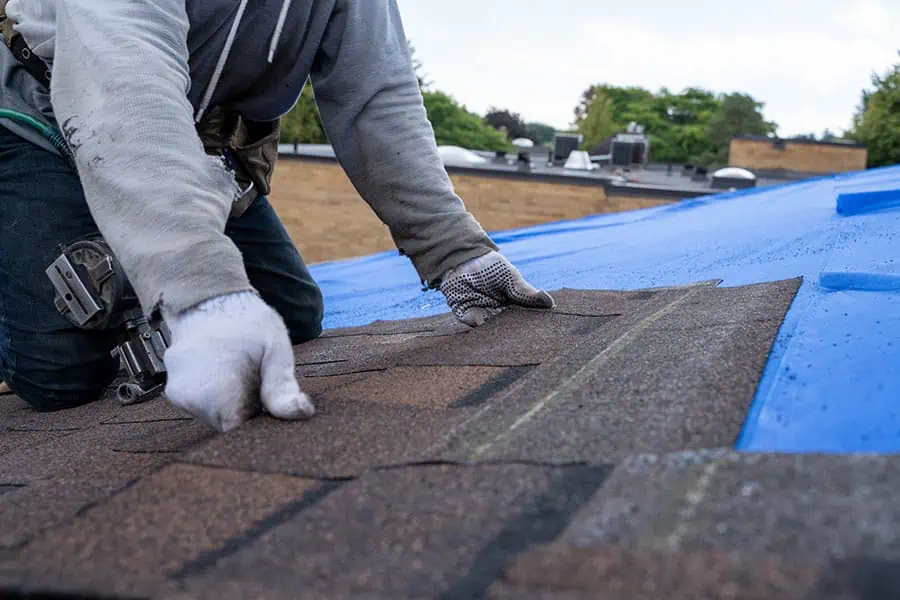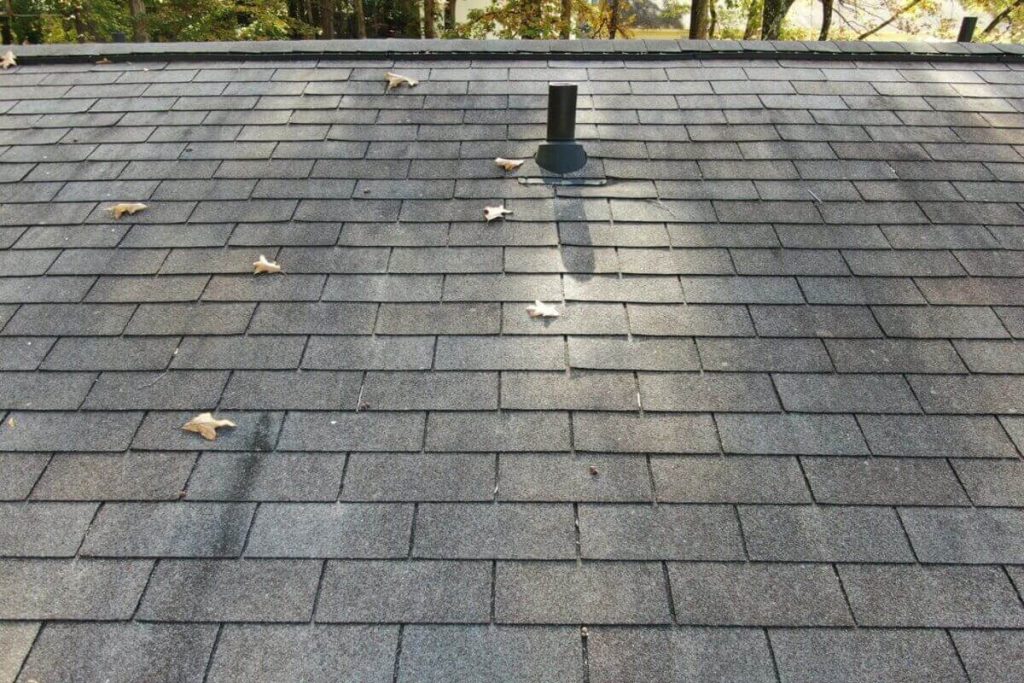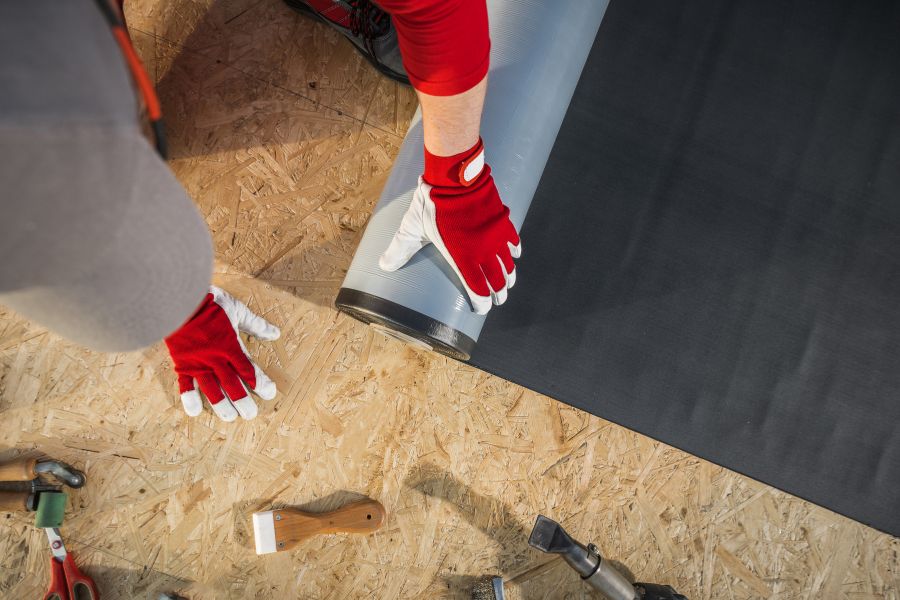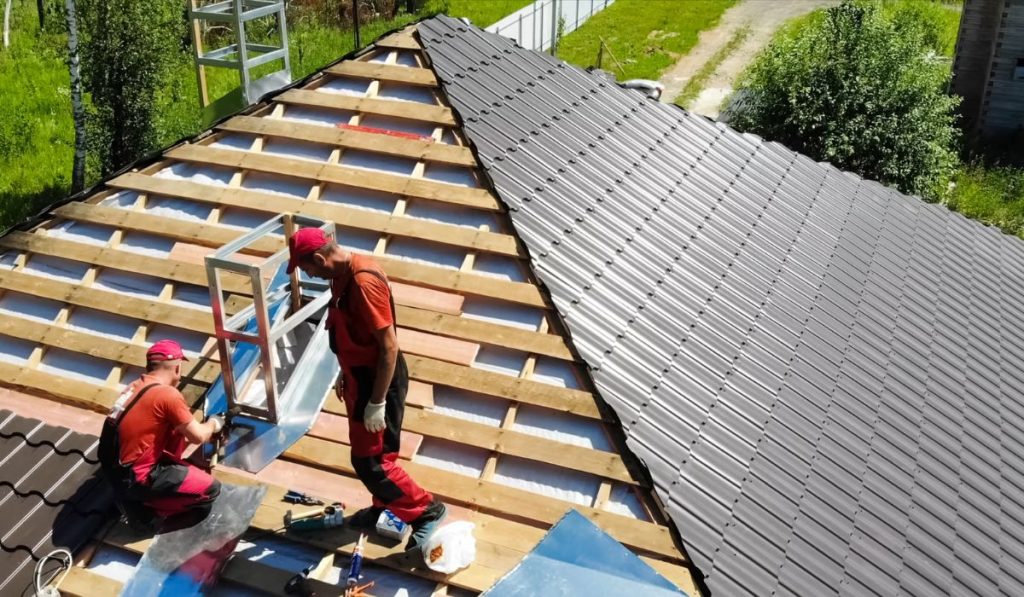Granular loss is a common issue, especially with asphalt shingles, and can impact your roof’s durability.
These granules protect your roof from UV rays and other elements. If they start to wear away, it shortens your roof’s lifespan.
In this guide, we’ll show you how to repair granular loss and protect your roof for the long term.
How to repair granular loss on the roof?
Granular loss on your roof usually means it’s time to replace the shingles. To repair, you can apply a special granule sealant or use a shingle patch to stop further damage from occurring.
Key Takeaways
- Granule loss on a roof is a sign of wear and can be caused by age, weather, or impact.
- Regular maintenance, such as cleaning and inspection, can help identify early signs of granular loss.
- Repairing granular loss requires replacing damaged shingles and ensuring proper roof protection.
Understanding Granular Loss on a Roof

Granular loss refers to the shedding of the small, pebble-like granules that coat asphalt shingles.
These granules are made of crushed stone and serve as an essential layer that protects your roof from UV rays, harsh weather, and physical damage.
Over time, exposure to the elements can cause these granules to wear off, leaving the underlying shingles exposed and vulnerable to further damage.
In many cases, granular loss is a natural part of a roof’s aging process, especially on roofs that are over 15-20 years old.
Granular loss on a roof is a common issue that can arise over time, particularly for asphalt shingles.
These granules serve as a protective layer for your roof, shielding it from harmful UV rays and other environmental factors.
When the granules begin to wear away, it can lead to decreased durability and a shorter lifespan for your roof.
Understanding how to repair granular loss effectively can help protect your roof and extend its life.
However, significant granular loss can reduce the effectiveness of your roof, leading to leaks, water damage, and other issues.
Causes of Granular Loss
There are several factors that can contribute to the loss of granules on your roof:
1. Age of the Roof
Over time, the protective granules on asphalt shingles will naturally break down due to exposure to UV rays, rain, wind, and temperature changes.
Older roofs are more likely to experience granular loss as the shingles reach the end of their lifespan.
2. Weather Conditions
Severe weather, including heavy rain, hail, or high winds, can accelerate the process of granular loss.
Hailstones can physically damage shingles, causing the granules to loosen and fall off. Strong winds can also blow the granules away, leaving the shingles exposed.
3. Poor Ventilation
Insufficient ventilation in the attic can cause the roof to overheat, which can damage shingles and lead to premature granular loss.
Proper attic ventilation helps regulate temperature and moisture levels, preventing unnecessary stress on your roof.
4. Improper Installation
If shingles were installed incorrectly, they may not have adhered properly to the roof, causing them to wear down faster and lose granules prematurely.
Installation errors can be exacerbated by improper sealing or inadequate nailing.
How to Repair Granular Loss


While granular loss is a natural part of the aging process, there are steps you can take to repair it and prevent further damage. Here’s how to approach the repair process:
1. Inspect the Roof for Damage
Before attempting roof repairs, it’s essential to conduct a thorough inspection of the roof.
This will help you assess the extent of the granular loss and determine whether the roof needs minor repairs or a complete replacement.
Check for Missing Granules: Look for areas on the shingles where granules are missing. These spots may appear darker or have a shiny, exposed surface.
Look for Cracks or Holes: Inspect the shingles for any cracks or holes that may have developed due to the loss of granules. These damaged areas are more susceptible to leaks.
Check the Attic: Look for any signs of leaks or water damage in the attic.
If you notice water stains on the ceiling or walls, this could indicate a more severe problem that requires professional attention.
2. Replace Damaged Shingles
If you’ve identified shingles with significant granular loss or damage, replacing them is the best way to ensure the continued protection of your roof.
Here’s how you can replace damaged shingles:
Remove the Old Shingles: Use a flat pry bar to carefully lift the damaged shingles. Remove the nails securing the shingle and take it off the roof.
Prepare the Area: Inspect the area underneath the removed shingle. If there’s any debris or dirt, clean it up before installing the new shingle.
Install New Shingles: Place the new shingles in the gap where the old one was removed.
Ensure that it lines up with the surrounding shingles and secure it with roofing nails. Make sure the shingle is properly sealed to prevent leaks.
Check for Proper Alignment: Ensure that the new shingle is aligned with the rest of the roof. Misaligned shingles can cause water to pool and lead to leaks.
3. Apply a Sealant to Exposed Areas
Once you’ve replaced the damaged shingles, it’s a good idea to apply a roof sealant to areas that are particularly vulnerable.
This will help prevent further granular loss and increase the lifespan of your roof.
Choose a High-Quality Sealant: Select a sealant that is designed for asphalt shingles. Look for a product that offers UV protection and water resistance.
Apply Evenly: Use a brush or roller to apply a thin, even layer of sealant over the shingles, particularly in areas where granular loss is noticeable.
Avoid overapplying, as this can cause the shingles to become too slippery or attract dirt.
4. Maintain Your Roof Regularly
Preventing future granular loss is all about regular maintenance. By keeping your roof in good condition, you can extend its lifespan and reduce the need for frequent repairs.
Regular Roof Inspections: Inspect your roof at least twice a year, especially after storms or extreme weather.
Look for signs of damage, missing granules, or other issues that could lead to further deterioration.
Clean Your Roof: Keep debris, leaves, and branches off your roof to prevent additional wear and tear. Gently clean the roof using a soft brush or broom to avoid damaging the shingles.
Ensure Proper Ventilation: Make sure your attic has adequate ventilation. This will help regulate the temperature and reduce the chances of your shingles deteriorating due to heat buildup.
When to Call a Professional


While minor granular loss can be handled by homeowners, significant damage or extensive granular loss may require professional repair.
If you find that large sections of your roof are damaged or missing granules, it’s best to contact a roofing professional to assess the situation.
A professional roofer can help determine whether your roof needs repairs, a replacement, or a more thorough inspection to avoid further damage.
They will also have the tools and expertise to handle more complicated repairs that may be difficult for a DIYer to manage.
Frequently Asked Questions
1. How do I know if my shingles are suffering from granular loss?
Look for areas where the shingles appear darker or shinier. These spots indicate that the granules have worn away, leaving the shingles exposed to the elements.
2. Can I repair granular loss myself?
If the damage is minor, you can replace the damaged shingles yourself. However, significant granular loss or widespread damage may require professional help.
3. How often should I inspect my roof for granular loss?
It’s recommended to inspect your roof at least twice a year, especially after harsh weather conditions, to check for granular loss, damage, or signs of wear.
Conclusion
Granular loss is a common issue for asphalt roofs, particularly as they age.
While it’s a natural part of the roof’s lifespan, addressing it early on can prevent further damage and help preserve the integrity of your roof.
By replacing damaged shingles, applying a sealant, and maintaining your roof regularly, you can minimize the effects of granular loss and extend the life of your roof.
Regular inspections and proper care will ensure that your home remains protected for years to come. If the damage is significant, don’t hesitate to consult a roofing professional for assistance.





